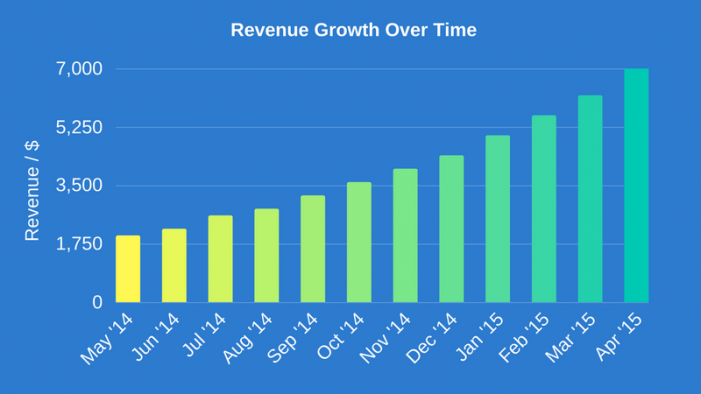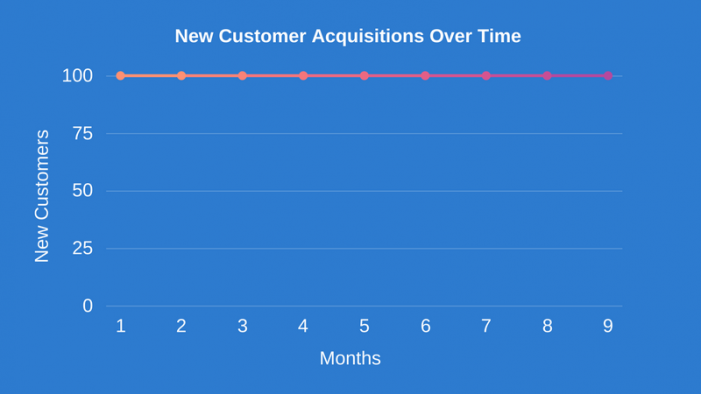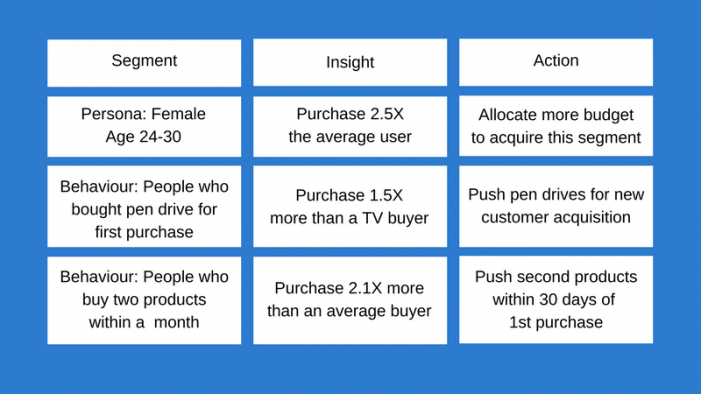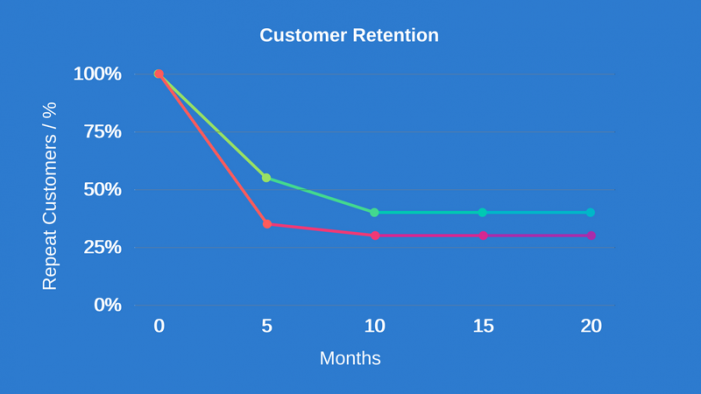
If you don’t grow fast, you die slowly (Mckinsey Startup Study).
One of the biggest challenges startups face today is differentiating between reality and the illusion of visible growth. It is crucial to set up proper measures at an early stage to demystify growth, ensuring it’s real and sustainable.
Why Is Demystifying Growth So Important?
The desire to grow and expand is what often pushes startups to perform at the rate they do. As an entrepreneur, you are motivated to take risks, some of which may even keep you up at night. However, most startups record a hockey-stick growth in their initial stages, but later hit a ceiling when they least expect to.
De-mystifying growth at an initial stage will help you:
- Make strategic decisions
- Gauge your company’s achievements
- Conduct performance reviews
- Identify pitfalls in advance
How Can I Understand And Sustain Growth?
A data driven approach helps analyse growth and derive more meaningful insights. A majority of entrepreneurs, therefore, use standard Google Analytics to capture website behaviour and a stand-alone Customer Relationship Management System (CRM) to capture customer data.
Here’s a more comprehensive approach:
1. Set up analytics and measure the right stuff (KPIs)
Your KPIs and analytics setup should come from a well thought out measurement plan. If you don’t already have one, start with these high-level business KPIs:
- New customers per month – This shows the new customer acquisition patterns
- Monthly retention of cohorts – Cohort charts show how related sets of customers return in future months after their initial purchase
Data for these KPIs must be maintained in your CRM or on an excel sheet, enabling you to extract accurate data and visualize growth patterns clearly.
2. Analyse and demystify growth
The sample revenue growth trajectory shown below is any entrepreneur’s dream, but how do you discern between a dream and reality?

Revenue Growth Over Time
In order to accurately demystify the truth behind the growth graph, you must carry out an in-depth analysis of the data. The easiest way is to show returning customers and new customers separately.
A sample retention curve shown below depicts the percentage of customers that return to the website after their first purchase.

Returning Customers
According to the above graph, only 70% (0.7) of customers made a purchase after their first purchase, and only 30% (0.3) made purchases the following month. Most importantly, the graph shows that customers have been retained only for six months. Six months is not necessarily a negative or a positive number because a great deal depends on individual business models.
Now let’s look at a graph showing new customer acquisitions over time:

Customer Growth
According to the graph, this business has acquired 100 new customers per month and maintained this number—a great achievement.
But let’s draw the total revenue graph using both of our previous graphs.
- First month customers: 100 (New customers in month 1) = 100
- Second month customers: 100 (New customers in month 2) + 100*0.7 (returning customers from month 1) = 170
- Third month customers: 100 (New customers in month 3) + 100*0.3 (returning customers from month 2) + 100*0.7 (returning customers from month 1) = 200
Likewise, calculations can be made for the next few months in order to draw a more accurate graph:
- Fourth Month = 220
- Fifth Month = 240
- Sixth Month = 260
- Seventh Month = 280
- Eighth Month = 280
- Ninth month = 280

Revenue
This is a more accurate and clearer picture of your growth. And as in most cases of startup growth, while the graph shows steady growth during the first few months, the curve reaches a level of stagnation soon after.
The first step to gauging whether you are in a growth illusion, is to set up the necessary measurement and tracking mechanisms, so you can properly understand your retention and new customer acquisition volumes each month. Once you identify your gaps, you will be able to optimise both variables. Always remember to work on retention optimisation and new customer acquisition simultaneously, as both variables contribute to your growth.
Homejoy, a home cleaning startup once raised $64 from the best investors in Silicon Valley and invested funds heavily on customer acquisition alone. However, despite having attracted an impressive number of customers through the raised funding, the lack of a retention plan in place resulted in Homejoy failing to sustain their growth. Read the full article here.
3. Act
Based on the high-level KPIs explained earlier, you could distinguish which numbers you need to focus on growing; new customers, retention of customers, or both. You can simply work on these two KPIs, taking action based on your findings to achieve sustainable growth.
- New Customer Acquisition
To acquire new customers, you can target an entirely new audience, which can be easily done through major ad platforms. Create an audience with website visitors and remove them from new customer acquisition campaigns so that they do not get spammed by you, or target an entirely new persona or product line.
- Retain Your Customers
You should be able to understand the retention curve or revenue per user per year (or suitable time frame for your business) before you act on it. Segment your retention curve based on personal and behavioural actions to identify best performing segments and worst performing segments of customers. By understanding best performing segments, you can work on expanding best segments while optimising or eliminating worse performing segments.
Here are some sample insights that can be derived from a typical e-commerce business:

4. Measure and optimise
Retention analysis will give us actionable insights, but we need to keep in mind that all actions are based on hypothesis and are yet to be proven. In this case, we need to launch a well-structured control experiment to perceive the real impact of our action.
- Control Experiment:
Divide a sample set of your users into two groups; a control group and treatment group. Follow up by performing a specific action only on the treatment group. The earlier measure can help quantify the real impact for intended actions. If you see an improvement with your action, your retention graph should look like the one shown below:
- Blue – Improved retention from users who are in the Treatment Group
- Green – Users who are in the Control Group

Retention
Through properly measured optimisation, you can allocate more budget to profitable cohorts while persuading unprofitable cohorts to become more profitable.
If you are looking for low hanging fruit to optimise, start with first impressions. If the customer is happy with their first purchase, there is a high probability of them coming back again. Brainstorm and come up with ideas to test and optimise this important first impression.
Pay more attention to other approaches to engage customers. Use email marketing, SMS, remarketing, segregation of custom audiences and customer satisfaction data wisely to optimise your retention. Investment in machine learning is highly beneficial should you have the capacity to make that investment. But till then, you can still perform control experiments to discover the real value of your retention optimisation campaigns.
Bain & Co shows that a 5% increase in customer retention can increase a company’s profitability by 75%.
Conclusion
Even though achieving growth is important, make sure accurate measures are in place to ensure you’re not falling for a growth trap. Remember, a rising top line does not necessarily translate to consistent growth. Put the necessary measures in place to identify your growth rate and analyse your data, so that you can address your challenges and tap into your company’s full growth potential.
Featured image courtesy myob.com








